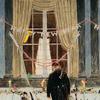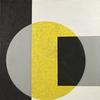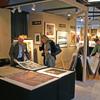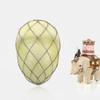Stanford surgeon’s love of Rodin’s hand sculptures leads to innovative museum exhibition
- STANFORD, California
- /
- March 18, 2014
James Chang fell in love with the Rodin Sculpture Garden at Stanford when he was an undergraduate. Later, while training in plastic and reconstructive surgery at the Stanford University School of Medicine, he visited the Cantor Arts Center with his family on Thursday evenings, where they would enjoy dinner in the café and then the art. His fascination for the work of the famous French artist Auguste Rodin (1840–1917) grew as Dr. Chang saw signs in the sculptures of the medical conditions he was learning to identify. Now as a professor in Stanford’s medical school, he shows images of Rodin’s sculptures of hands to medical students and hand surgery trainees, asking them to make diagnoses and hoping the artworks will make learning more fun and memorable.
Dr. Chang’s enthusiasm for this art has also fueled his undergraduate seminar, “Surgical Anatomy of the Hand: From Rodin to Reconstruction” with students studying the hands that Rodin created and their perceived medical conditions aided by advanced technology. Three-dimensional scans of the sculptures combined with CT scans of patients’ bones, nerves and blood vessels create a new “augmented reality” that reveals the pathologies beneath the bronze and even allows students to perform virtual surgery.
This remarkable seminar inspired an exhibition that allows museum visitors to experience Rodin’s hands in much the same manner as Dr. Chang’s students. “Inside Rodin’s Hands: Art, Technology, and Surgery” opens at the Cantor April 9 and continues through August 3. The exhibition, unique in how it merges art and science, involved an unprecedented collaboration between four diverse groups at Stanford: the Cantor Arts Center, Dr. Chang and his students, the Division of Clinical Anatomy, and the Lane Medical Library.
“This exhibition brings together the best of Stanford with a cross-disciplinary set of contributors,” said Cantor Director Connie Wolf. “We were all inspired by Dr. Chang and his passion. Outstanding individuals from the anatomy department at the School of Medicine contributed unique, cutting-edge technology that is changing how surgery is taught throughout the world. At the Cantor, we offered our curatorial expertise, the renowned Rodin collection, and our commitment to interdisciplinary approaches to the arts. And the medical school’s Lane Library is lending important historical materials. The groups worked so well together, this is truly a project that could only have happened at Stanford.”
Dr. Chang cited the unprecedented collaboration for the success of the overall project, the seminar and the exhibition. He added, “I wanted to participate in this exhibition for the same reason I introduced Rodin into my seminar: to get students in the humanities excited about the sciences, and to get doctors to step out of the hospital to appreciate art. I have found that artists and surgeons appreciate human anatomy with equal passion.”
The Exhibition
The exhibition allows visitors to experience Rodin’s hands as Dr. Chang’s students do in the seminar. After an introduction to Rodin, his art, and his appreciation of the hand as an especially expressive part of the human body, the exhibition presents the modern surgeon’s diagnostic process. Rodin bronzes on display are accompanied by evaluations of the sculptures’ perceived conditions, written by Dr. Chang and his students. Photographs of patients’ hands with the same conditions—Dupuytrens contracture, Apert syndrome, Charcot-Marie-Tooth disease, ganglion cyst, thumb amputation, fracture and stiff joint— illustrate how surgeons correct the conditions.
Visitors see what lies “beneath the skin” of the bronze hands—the underlying anatomy that Dr. Chang imagined when he encountered the sculptures at the Cantor—through the use of augmented reality. By rotating an iPad in an arc around three of Rodin’s hand sculptures, visitors can see computer-generated graphics of bones, nerves and blood vessels from varying angles. Dr. Chang uses this technology in his class because it gives his students a sense of the hand’s three-dimensional structure, an experience otherwise limited to time working on actual cadavers. In Dr. Chang’s class, students go on to perform virtual surgery on the hands, a teaching method likely to become increasingly prevalent in medical schools.
The creation of the computer-generated images for the Rodin-hands augmented reality required close cooperation between diverse Stanford medical groups. After hyper-detailed scans were made of the exterior of the bronzes, Dr. Paul Brown and his colleagues at Stanford’s Division of Clinical Anatomy put CT scans of the internal elements of some of Dr. Chang’s patients into the scans of the bronzes. (See “The Division of Clinical Anatomy,” below.)
An added feature of the exhibition puts the study of anatomy into historical context with medical texts published between the 16th and 19th centuries. Illustrations in these volumes, lent by the Lane Medical Library and Stanford’s Special Collection, help visitors see how earlier generations studied the anatomy of the hand. Labels written by Michael Bartolos (’14, M.F.A.), Kathleen Chang (Dr. Chang’s high-school age daughter) and Susan Chang (’15, Physics) explain the importance of the exquisitely detailed illustrations.
Videos on view depict virtual hand surgery and also highlight the uniquely collaborative nature of the exhibition. The videos were created by the anatomy department’s staff and also by Arhana Chattopadhyay, a Stanford medical student. Visitors can also download an iBook created by high school intern Alexandra Bourdillon that summarizes the exhibition’s content.
Wolf noted, “An important part of the Cantor’s mission is to engage Stanford students from across disciplines—so as to broaden their overall education and world-view. This exhibition certainly accomplishes that.”



__Portrait_of_a_Young_100x100_c.jpg)










